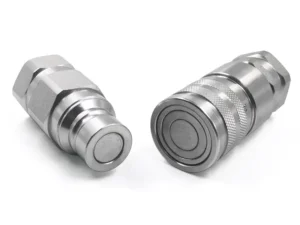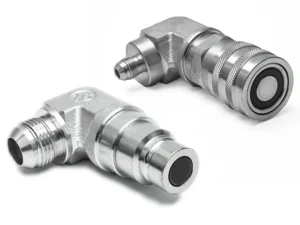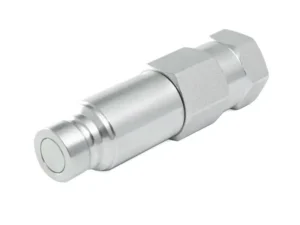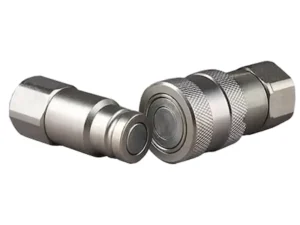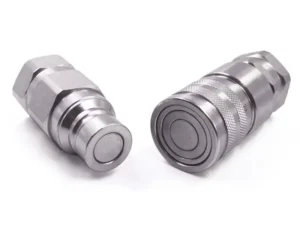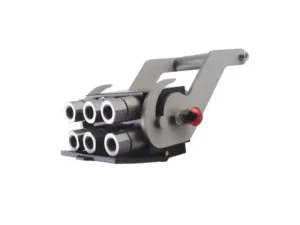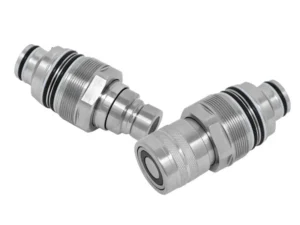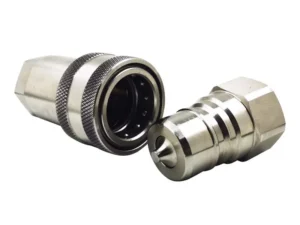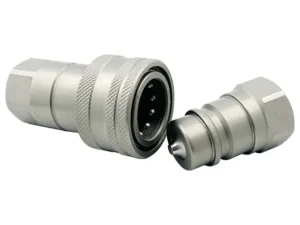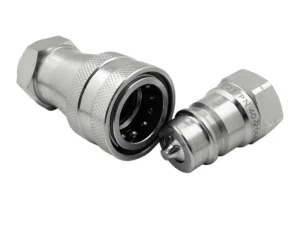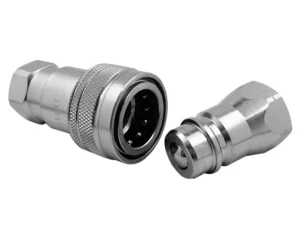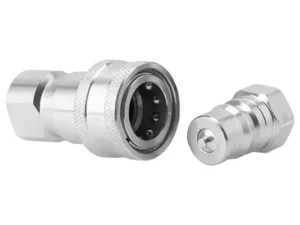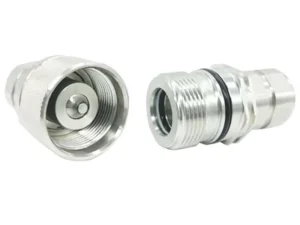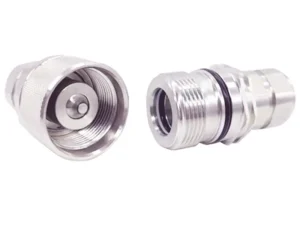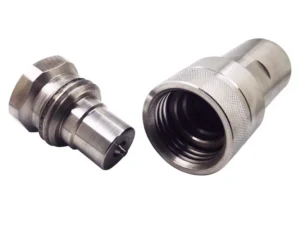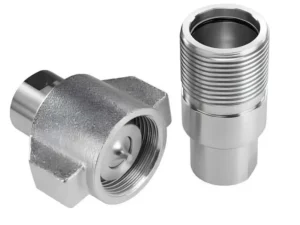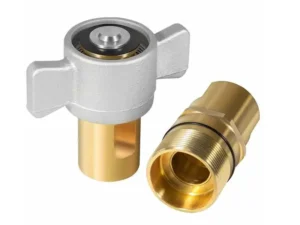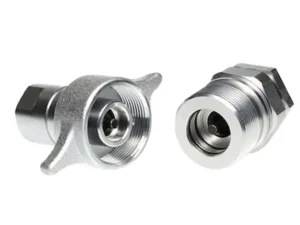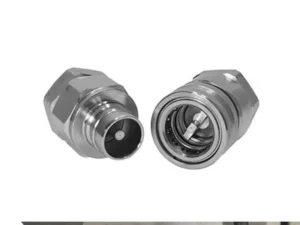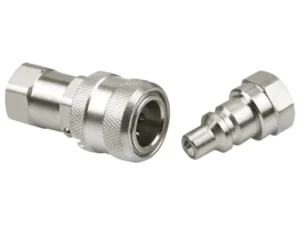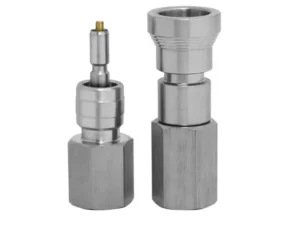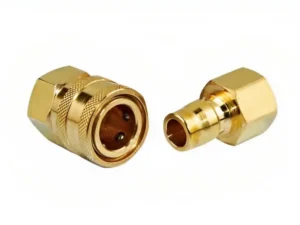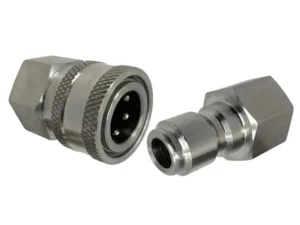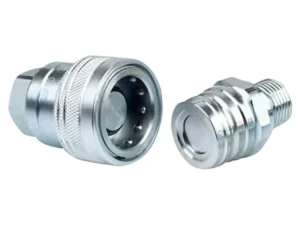CAM & GROOVE COUPLINGS
Hose-to-Hose or Hose-to-pipe American “military specification” quick coupling
Camlock Quick couplings (also called cam and groove fittings camlock) are manufacturerd worldwide according to the American “military specification” MIL-C-27487. This American standard fixes the coupling side in a limited way, but not the connection side.
The Camlock fittings Couplings are used for hose-to-hose or hose-to-pipe / manifold connections for the transfer of liquids or dry bulk products.
Note:Cam & groove couplings must never be used for steam or compressed air applications.
Construction
- Brass, Aluminium alloys, Stainless Steel body material options
- NBR-Gasket working at -20°C to +65°C

FEATURES
- Cam loking couplings serve as the link between hoses and connections to transport liquids, solids and gases, except liquid gas and steam.
- The couplings are capable of operating of operating the pressure range 0.8 bar to 16 bar working pressure.
- Aluminium-cast-materials working pressure 0.8 bar to 10 bar.
- Suitable to operate without using any tools
APPLICATIONS
- Cam loking couplings serve as the link between hoses and connections to transport liquids, solids and gases, except liquid gas and steam industrial,
Differences between Quick Coupling and Cam and Groove Camlock
Quick couplings and cam and groove (camlock) fittings are both used to connect hoses, pipes, and other fluid transfer components quickly and easily. However, they have some key differences in their design, applications, and ease of use.
Quick Couplings
- Design: They come in various types, but generally have a lever or push-button mechanism that engages or disengages the coupling. Some require tools, while others are completely tool-free.
- Applications: Often used for applications requiring frequent connections and disconnections, such as compressed air tools, fluid transfer systems, and medical equipment.
- Ease of Use: Generally quicker and easier to connect and disconnect than camlock fittings, especially for tool-free types.
Cam and Groove (Camlock) Fittings:
- Design: Consist of a male adapter and a female coupler. The male adapter has a cam lever that rotates to lock or unlock the coupling with the female coupler’s grooved collar.
- Applications: Ideal for applications requiring high-pressure or high-flow connections, such as industrial hoses, agricultural equipment, and fire fighting systems.
- Ease of Use: Require some effort to rotate the cam lever compared to quick couplings, but still relatively easy to connect and disconnect.
- Drawbacks: Not as quick to connect and disconnect as some quick couplings, especially when wearing gloves or working in confined spaces.
Stainless Steel Camlock Fittings: Durable Connections for Demanding Applications
Stainless steel camlock fittings, also known as cam and groove couplings, are robust and versatile connectors made for reliable performance in challenging environments.
- 304 and 316 stainless steel are the most common grades used, offering excellent corrosion resistance, strength, and durability.
- They can handle a wide range of liquids and gases, including harsh chemicals, acids, and corrosive fluids.
- Suitable for high-pressure and high-temperature applications compared to other materials like plastic or aluminum.
Applications
- Chemical processing: Transferring corrosive fluids, acids, and solvents.
- Food and beverage: Connecting hoses for sanitation, dispensing liquids, and cleaning tanks.
- Oil and gas: Connecting hoses for refueling, transferring fluids, and maintenance.
- Construction: Joining flexible hoses for water supply, concrete pumping, and dust collection.
- Firefighting: Connecting hoses for water pumping, foam delivery, and equipment hookup.
Available Seals and Temperature Range
All carbon steel products have Nitrile Butadiene Rubber (NBR) seals fitted as standard. All stainless steel products have Fluoro-elastomer Rubber (Viton®) (FKM) seals fitted as standard. Special seal materials are available on request.
| Abbreviation | Trade Name | Chemical Name | Min. Temp | Max. Temp |
|---|---|---|---|---|
| NBR, XNBR | Chemigum®, Hycar8, Breon®, Butakon®, Butacril®, Buna-N®, Perbunan®, Paracril®, Krynac®, Europrene-N®, Nipol® | Nitrile Butadiene Rubber Carboxylated Nitrile Rubber |
-40ºC (-40ºF) | 106ºC (223ºF) |
| FKM(FPM) | Dai-el®, Fluorel®, Tecnoflon®, Viton® | Fluoro-elastomer Rubber | -20ºC (-4ºF) | 200ºC (392ºF) |
| EPR, EPDM | Buna-AP®, Dufral®, Epsyn®, Nordel®, Epcar8, Keltan®, Royalene®, Polysar-EPDM® | Ethylene Propylene Copolymer Ethylene Propylene Terpolymer |
-50ºC (-58ºF) | 120ºC (248ºF) |
| FVMQ | Silastic 1S®, FSE® | Fluorosilicone Rubber | -65ºC (-85ºF) | 170ºC (338ºF) |
| FFKM | Perlast®, Kalrez®, Chemraz®, Kaflon® | Perfluoroelastomer | -25ºC (-13ºF) | 300ºC (572ºF) |
